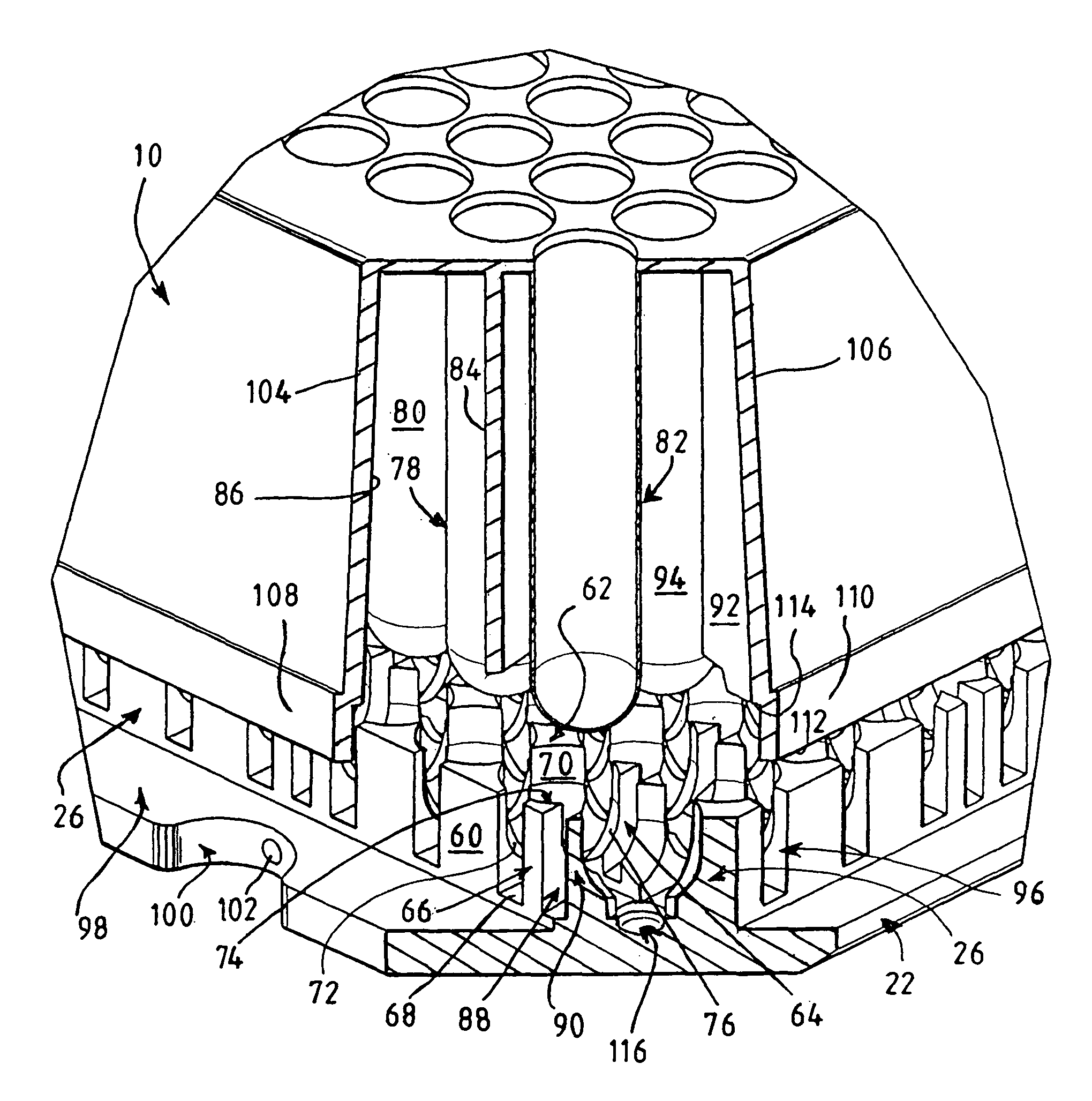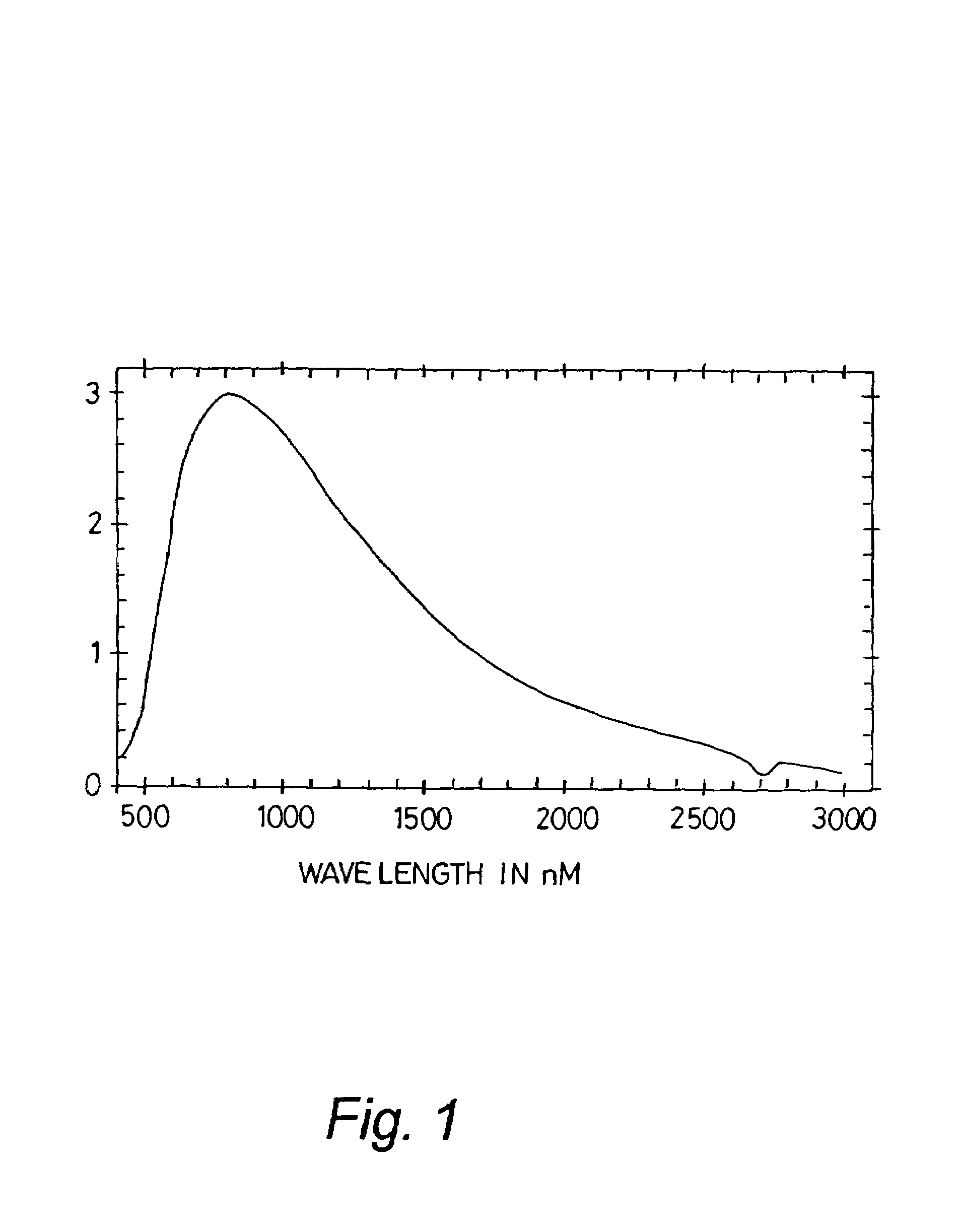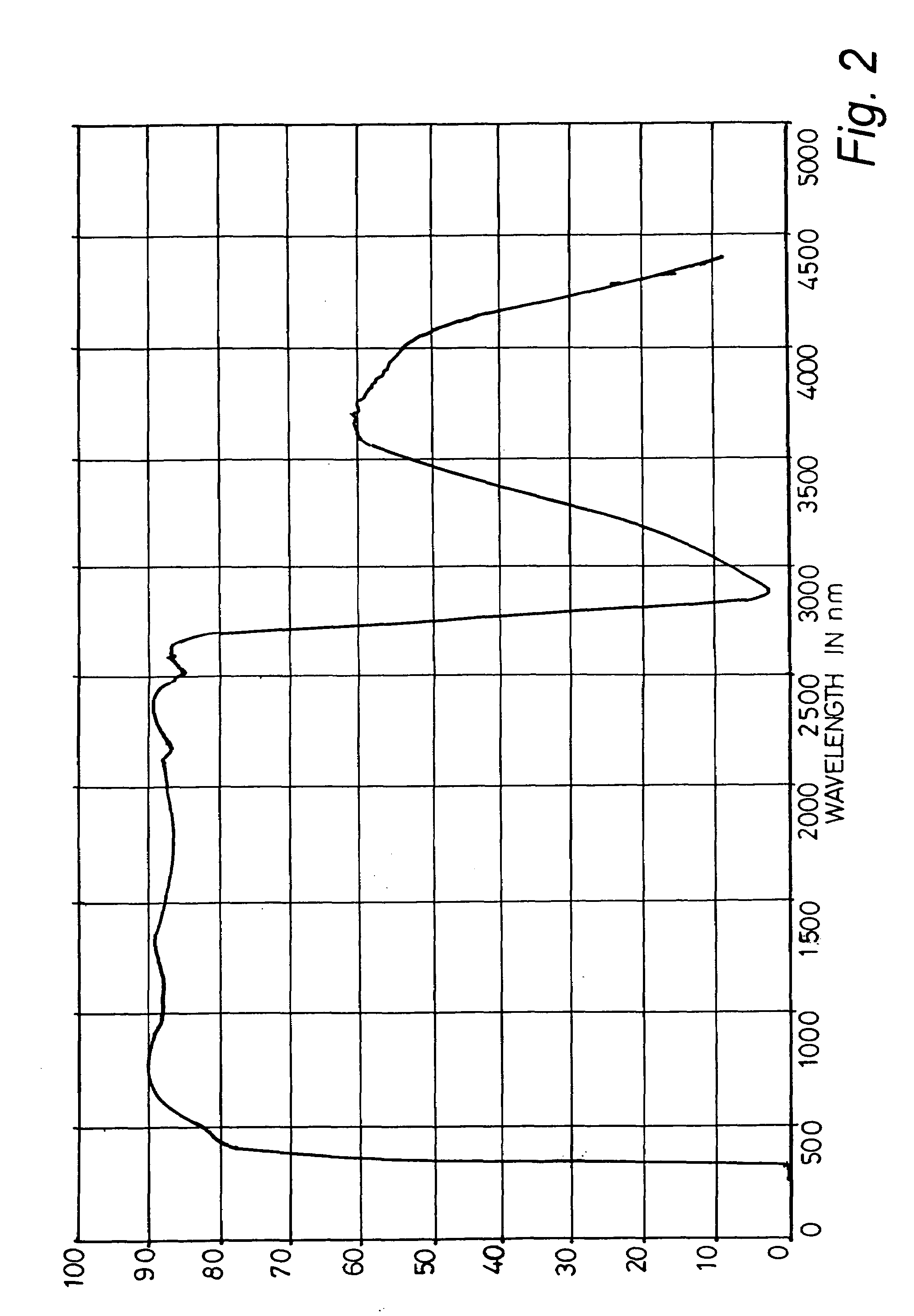Heating of microtitre well plates in centrifugal evaporators
a technology of centrifugal evaporator and well plate, which is applied in the direction of centrifuges, laboratory glassware, separation processes, etc., can solve the problems of liquid containing valuable sample material being spilled or lost, cross-contamination of samples which may have been expensively purified, and mixing cannot be boiled off at atmospheric pressur
- Summary
- Abstract
- Description
- Claims
- Application Information
AI Technical Summary
Benefits of technology
Problems solved by technology
Method used
Image
Examples
Embodiment Construction
[0032]FIG. 1 shows how the emissions from a halogen-infrared reflector lamp type HLX 64635 (15v / 150 w) varies with wavelength in the range 500-3000 nm, and FIG. 2 illustrates the percentage transmission efficiency of a Robax (registered trademark) 3 mm lens-filter over wavelengths in the range 0-5000 nm. It will be seen that there is a sharp fall-off in transmissivity below wavelengths of 500 nm and above wavelengths of 3000 nm. Such filters are employed in centrifugal evaporators between a lamp having an emission spectrum similar to that of FIG. 1, and a sample or samples.
[0033]A conventional microtitre moulded well plate housing 10 is shown in the perspective view of FIG. 3. The wells form a closely spaced regular matrix of openings such as 12, 14 in the upper surface 16 of the moulding. In FIG. 4, the same well plate is shown in reverse, revealing the hemispherical lower ends of the wells, such as 18, 20.
[0034]In accordance with the invention, a heat transfer plate radiation barr...
PUM
| Property | Measurement | Unit |
|---|---|---|
| wavelengths | aaaaa | aaaaa |
| wavelengths | aaaaa | aaaaa |
| thickness | aaaaa | aaaaa |
Abstract
Description
Claims
Application Information
 Login to View More
Login to View More - R&D
- Intellectual Property
- Life Sciences
- Materials
- Tech Scout
- Unparalleled Data Quality
- Higher Quality Content
- 60% Fewer Hallucinations
Browse by: Latest US Patents, China's latest patents, Technical Efficacy Thesaurus, Application Domain, Technology Topic, Popular Technical Reports.
© 2025 PatSnap. All rights reserved.Legal|Privacy policy|Modern Slavery Act Transparency Statement|Sitemap|About US| Contact US: help@patsnap.com



